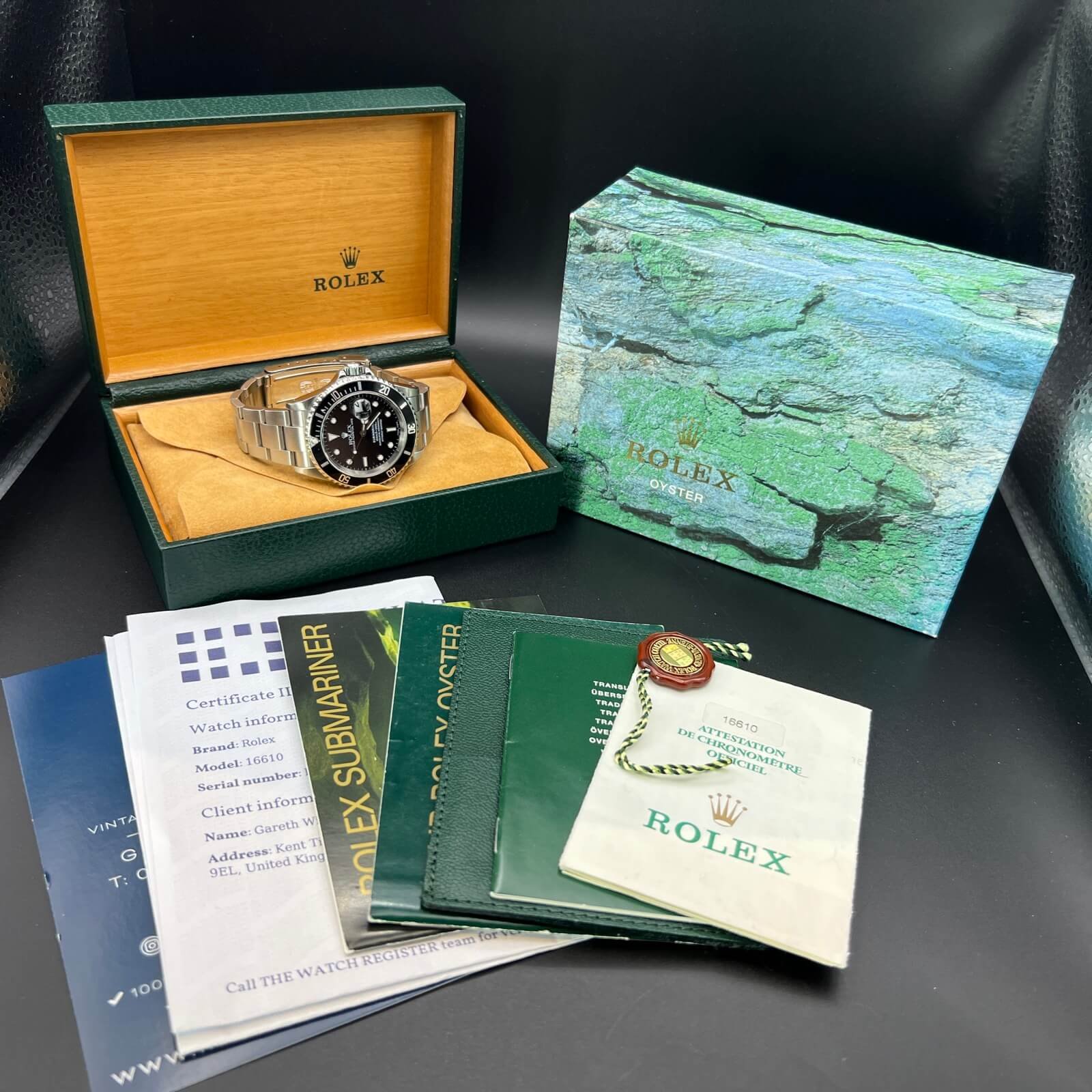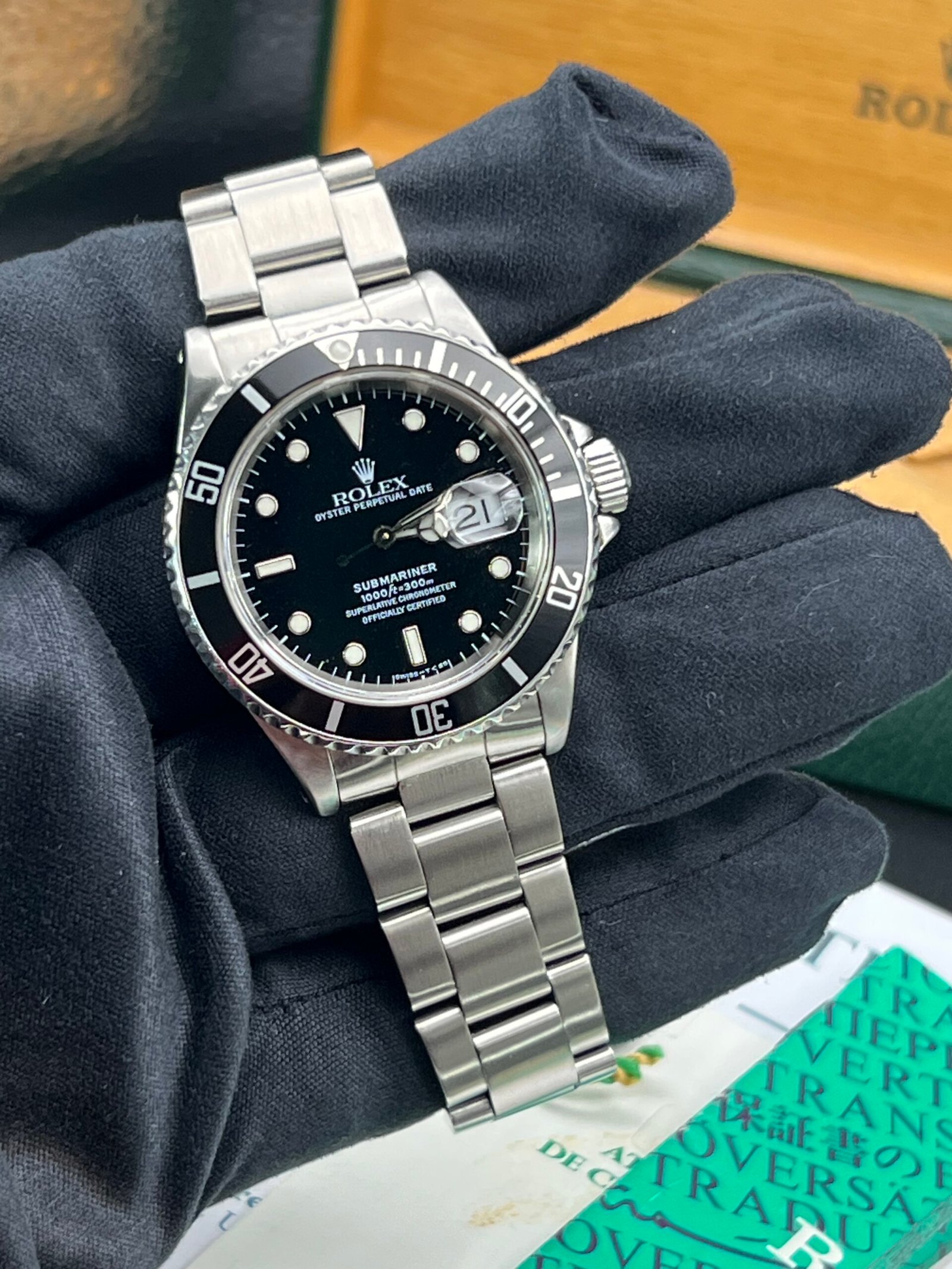A passage inspired by the most common questions asked by people looking for a used Rolex.
Summary
- Buy the seller – Are they well reviewed and trusted? Check reviews from external sources too.
- Are they a legitimate business? Check here
- Condition: Is the watch well presented, and are most of the imperfections detailed in the product description? Most vintage watches will have signs of wear.
- Service: Has the watch been serviced? Is there historical documentation to support the claim?
- Accessories: Does the watch have a certificate? Does it come with the original box?
- Parts: Have pattern replacement parts been used? Are parts available for the watch?
- Is the watch genuine? What proof is the seller claiming?
“Lowest price?”, “last price?” “, final price?” “, best you’ll take?“, these few phrases seem to be the most common I receive. More often than not, not accompanied by any other pleasantries.
Buying a Rolex, especially a second-hand one, certainly cannot be done on price, but seemingly, for a lot of people, this is their biggest concern. Buying a watch for yourself (not buying in the hope to flip on) there are lots of factors worth considering. Often, a good phrase is to “buy the seller”. The seller should have lots of good feedback (check out the detailed reviews and sort by latest), be an actual business not masquerading as one on social media (check their credentials on the Government website here), offer constructive advice and information on the watch, deliver the watch in a fashion that installs confidence, and remedy any issues with good customer service/care.
Condition: Is the watch well presented? No nasty over-polish, dents, bends, missing links, etc. Most second-hand watches will have minor marks. However, don’t accept a watch that’s been worn daily and is on its last legs. Is the watch running well? Has it been serviced? If it needs servicing, will the seller help later down the line? Just some basic things to look at when looking at a watch. All these things will have an impact on the price, of course.
What comes with the watch? When purchasing watches over 20 years old, there’s a big chance the original accessories and papers have been lost, especially with the number of Rolexes being imported over the years. If a watch of this age has lost its certificate, does it matter? In short, if you’re buying a watch to wear, NO, as long as that’s reflected in the purchase price. On different models, the addition of papers can mean a greater price. For example, a 1980s/90s Datejust watch with papers could add £300-500 onto the price. However, with a rarer Submariner, GMT, or Daytona, the papers could add £1000s for a collector.
Aftermarket parts. A big contention in the watch world. Ladies’ watches, particularly, are prone to sporting an aftermarket/custom/fake dial. This is largely due to the lack of original fancy colour dials available. It’s not a market I actively sell in nowadays, as the dials tend to cause issues, but if it’s made clear at sale and it’s what the clients requested, there’s little harm in it. The same for consumable/service parts. For instance, gaskets, Plexiglas, rotor posts, mainsprings, etc. In older watches, these will have all been changed more often than not, using a pattern part. Rolex does not release parts to the public, so watchmakers use a supplier of pattern parts, much the same as a non-main dealer servicing your car. If every time you scratched a Plexiglas on a 16013, you went dashing back to Rolex, you’d have to have deep pockets.
Is the watch genuine? Is it running correctly? What is the condition? If something goes wrong, will you fix it? What comes with the watch? These are just a few things you may want to keep in mind.
So in summary, price is not THE be-all and end-all when buying a Rolex watch. It depends on the motivation of the buyer.


